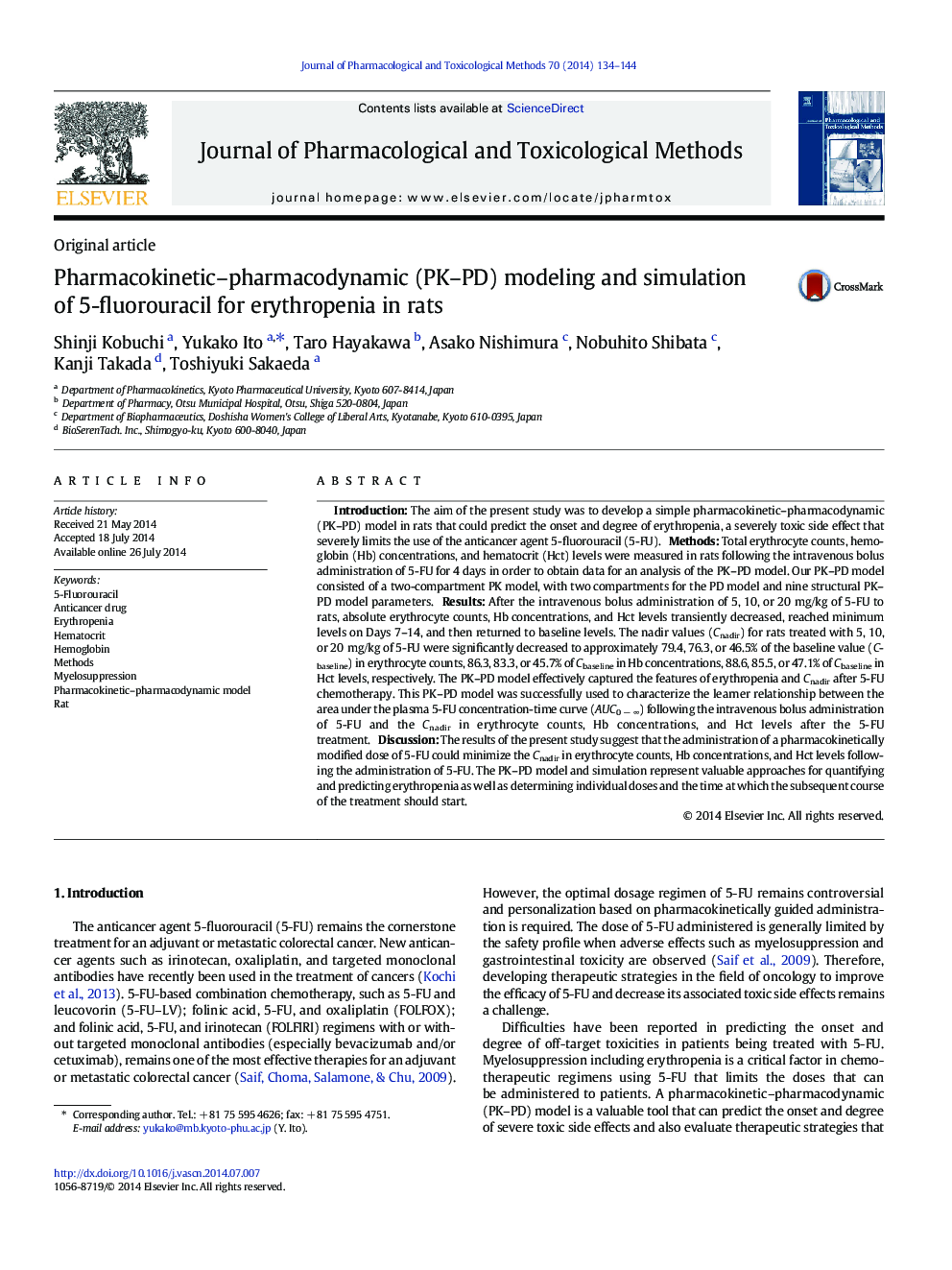| Article ID | Journal | Published Year | Pages | File Type |
|---|---|---|---|---|
| 5840993 | Journal of Pharmacological and Toxicological Methods | 2014 | 11 Pages |
IntroductionThe aim of the present study was to develop a simple pharmacokinetic-pharmacodynamic (PK-PD) model in rats that could predict the onset and degree of erythropenia, a severely toxic side effect that severely limits the use of the anticancer agent 5-fluorouracil (5-FU).MethodsTotal erythrocyte counts, hemoglobin (Hb) concentrations, and hematocrit (Hct) levels were measured in rats following the intravenous bolus administration of 5-FU for 4 days in order to obtain data for an analysis of the PK-PD model. Our PK-PD model consisted of a two-compartment PK model, with two compartments for the PD model and nine structural PK-PD model parameters.ResultsAfter the intravenous bolus administration of 5, 10, or 20 mg/kg of 5-FU to rats, absolute erythrocyte counts, Hb concentrations, and Hct levels transiently decreased, reached minimum levels on Days 7-14, and then returned to baseline levels. The nadir values (Cnadir) for rats treated with 5, 10, or 20 mg/kg of 5-FU were significantly decreased to approximately 79.4, 76.3, or 46.5% of the baseline value (Cbaseline) in erythrocyte counts, 86.3, 83.3, or 45.7% of Cbaseline in Hb concentrations, 88.6, 85.5, or 47.1% of Cbaseline in Hct levels, respectively. The PK-PD model effectively captured the features of erythropenia and Cnadir after 5-FU chemotherapy. This PK-PD model was successfully used to characterize the learner relationship between the area under the plasma 5-FU concentration-time curve (AUC0 â â) following the intravenous bolus administration of 5-FU and the Cnadir in erythrocyte counts, Hb concentrations, and Hct levels after the 5-FU treatment.DiscussionThe results of the present study suggest that the administration of a pharmacokinetically modified dose of 5-FU could minimize the Cnadir in erythrocyte counts, Hb concentrations, and Hct levels following the administration of 5-FU. The PK-PD model and simulation represent valuable approaches for quantifying and predicting erythropenia as well as determining individual doses and the time at which the subsequent course of the treatment should start.
